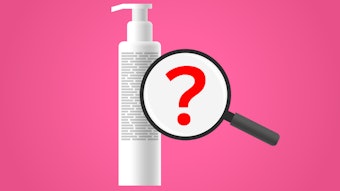
Editor's note: Our "Words from Wiechers" series considers the lessons our industry can learn from the late Johann Wiechers, Ph.D. He was an adviser, colleague and leader in the industry until his unexpected passing in 2011. Presenting Wiechers's insights is Tony O'Lenick.
This column reviews Chapter 20 of Wiechers's book, Memories of a Cosmetically Disturbed Mind. Here, Wiechers deals with regulation; specifically regulation under the so-called 7th Amendment to the European Cosmetic Directive.
Cosmetic Directive
For those who are not familiar with the Cosmetic Directive, it is Council Directive 76/768/EEC of 1976-07-27, on the approximation of the laws of the Member States relating to cosmetic products1 (as amended). It is the main European Union law on the safety of cosmetics. It was created under Art. 100 (ex Art. 94)2 of the Treaty of Rome. By agreement, it is also applicable in the European Economic Area.3
The directive defines a "cosmetic product" as "any substance or preparation intended for placing in contact with the various external parts of the human body (epidermis, hair system, nails, lips and external genital organs) or with the teeth and the mucous membranes of the oral cavity with a view exclusively or principally to cleaning them, perfuming them or protecting them in order to keep them in good condition, change their appearance or correct body odors." (Art. 1.1)
The main part of the directive is the different lists of substances in the annexes:
- substances that are banned from use in cosmetics (Annex II);
- substances that are subject to restrictions on their use (Annex III); such substances might only be permitted for certain types of cosmetics, or in certain concentrations, or subject to warning labels, etc.;
- permitted colorings (Annex IV);
- permitted preservatives (Annex VI); and
- permitted UV filters (Annex VII).
7th Amendment: Fragrance Declaration
Wiechers points out, "Did you notice a change in the world around you recently? No, I am not talking about changes in political regimes or country boundaries but things that really matter to us in the cosmetic industry. In particular, the chemical and cosmetic industries are facing tougher and tougher regulation all the time. Are our European parliamentarians walking along with their noses in the air, or do they indeed have a nose for matters that we cannot smell? This brings me to this month’s topic: the 7th Amendment, the latest change in European cosmetic regulation.
"What’s smelly about this, then? Starting in March 2005, we have to declare the presence of 26 fragrance ingredients in cosmetics if they are present at levels above the cut-off values of 0.001% for leave-on products and 0.01% for rinse-off products. The SCCNFP identified these 26 fragrance ingredients (13 of which are commonly used, 13 less frequently used) that are known to cause allergic reactions. All have names that might frighten consumers when they read these on their product labels: amyl cinnamal, amyl cinnamic alcohol, anisyl alcohol, benzyl alcohol, benzyl benzoate, benzyl cinnamate, benzyl salicylate, cinnamal, cinnamyl alcolhol, citral, citronellol, coumarin, eugenol, farnesol, geraniol, hexyl cinnamic aldehyde, hydroxy citronellal, isoeugenol, BMHCA, d-limonene, linalool, HMPCC, methyl heptine carbonate, methyl ionone alpha iso, oak moss and tree moss.
The adoption of regulation and the control on the availability of certain products in our industry needs to be established by an evaluation of risk/benefit analysis.
"... A long and impressive list that causes many red scribbles on my computer screen to appear, indicating how well-known these fragrance ingredients actually are. However, consumers must know these ingredients a lot better than Bill Gates’ programmers because, as John Middleton of Quest International told me, 'in an industry survey of over 300 fragrance mixtures, 100% of all deodorants or fine fragrances contain at least one or more of the ingredients listed above, and 26% of deodorants and 37% of fine fragrances contain at least 10 or more of the above ingredients.'
"Dermatologists claim that fragrances are the second most common cause of skin allergies after nickel. According to the Colipa Web site, only a small sub-section of the population suffers from fragrance allergy (less than 0.1%). For these consumers, ingredient labeling is the only real means of identifying the eventual presence of the specific allergen concerned and thus avoiding the product.
"Let’s go for the more dramatic scenario first and see whether we can modify an existing fragrance to remove all of the 26 allergens and keep the same odor fragrance. No. Can we then create a new fragrance without any of the 26 allergens? Yes, but it makes it difficult to use naturals and other ingredients containing the 26. Can we create, then, a new fragrance with all the 26 allergens below the cut-off values? No, cut-off levels do not help, as they are too low. Will there be any odor areas that will be difficult or even impossible to retain? Yes, citrus, lavandaceous, flora (rose and jasmine, for instance) and spicy. The impossibility of this replacement issue is starting to get up your nose and even if we really tried, we cannot fully replace the 26 ingredients.
"The only thing, therefore, left to do is to mention their presence on the label with all its possible consequences for adverse publicity, such as rejection by retailers or consumers. But on the other hand, given the fact that we have to do this according to the 7th Amendment, labeling may also have its advantages. With a targeted advertising campaign to educate consumers and retailers, our industry would show its willingness to help the troubled consumer to make a well-considered choice.
"Labeling will only be successful if the consumer, the retailer and the members of the European Parliament are educated to understand that the labeled ingredients are not dangerous to a very large proportion of the population, that most people can ignore the extended labels completely, but that it will help diagnosed consumers to choose their products based on facts.
"Let’s use the time till March 2005 to look beyond the end of our noses and show ourselves from our best side. Educating our consumers for the benefit of all—now that would really be a fragrant new breeze for our industry!"
As cosmetic chemists, we need seek more and better data to intelligently understand risk, and call out bad or unsupported data—as well as support data that is proper, even if it causes new regulation.
The Lesson
While the topic here is a particular regulation, it applies to all regulation. Firstly, the adoption of regulation and the control on the availability of certain products in our industry needs to be established by an evaluation of risk/benefit analysis. With the fact that allergies, for example, are relatively rare, the risk to the educated public is low. The key word is educated, for only those with adequate education can make an informed evaluation of the risk/benefit.
Secondly, since the publication of this work was more than 15 years ago, the authorities that have promulgated regulations have increased. It seems that all governments, federal, state and local, want to and will regulate cosmetics, again with little education being offered. As cosmetic chemists, we need seek more and better data to intelligently understand risk, and call out bad or unsupported data—as well as support data that is proper, even if it causes new regulation.
The ability to do this requires strong societies that provide such data and education. Data needs to be provided and explained, and positions on regulation be advocated. Unfortunately, in my opinion, we have not improved the level of education we provide to our consumers nearly as much as is needed. This remains a challenge.










